Research
Our overarching goal is to explore and understand the motions. We create novel wearable motion capture methods and systems by applying multiple discipline knowledge including signal processing, wireless sensor networks, artificial intelligence, electronics, and biomechanics.
(So far, the adopted main tools chain includes like Vivado, Eagle/Altium Designer, Matlab/Simulink, QT, Code Composer Studio, Blender, Unity, autodesk, etc. The programming language includes like VHDL/Verilog, C/C++, python, and so on.)
Questions of interest include: (i), what is the taxonomy of the motions, how to represent different motions? (ii), how to measure, spot, label, and storage motion data in the outside-of-lab scenarios? (iii), how to extract the useful information, like trajectory, normal/abnormal status, activity, from the time-series measurement data?
Currently, our main research activity is to enhance the functions of WonderEngine. Moreover, we are applying the platform to develop some novel applications.
Current projects
WonderEngine: a Wearable Motion Capture Platform
Overview: A motion measurement system, like a stepmeter, contains both of hardware and software. Though the application logic could be totally different between one and another, they share the common issues, such as minimization, wireless communication, wireless synchronization, energy saving, sensor data fusion, auto spotting, and so on. That motivated us to provide a platform as the integrated solution to these issues.
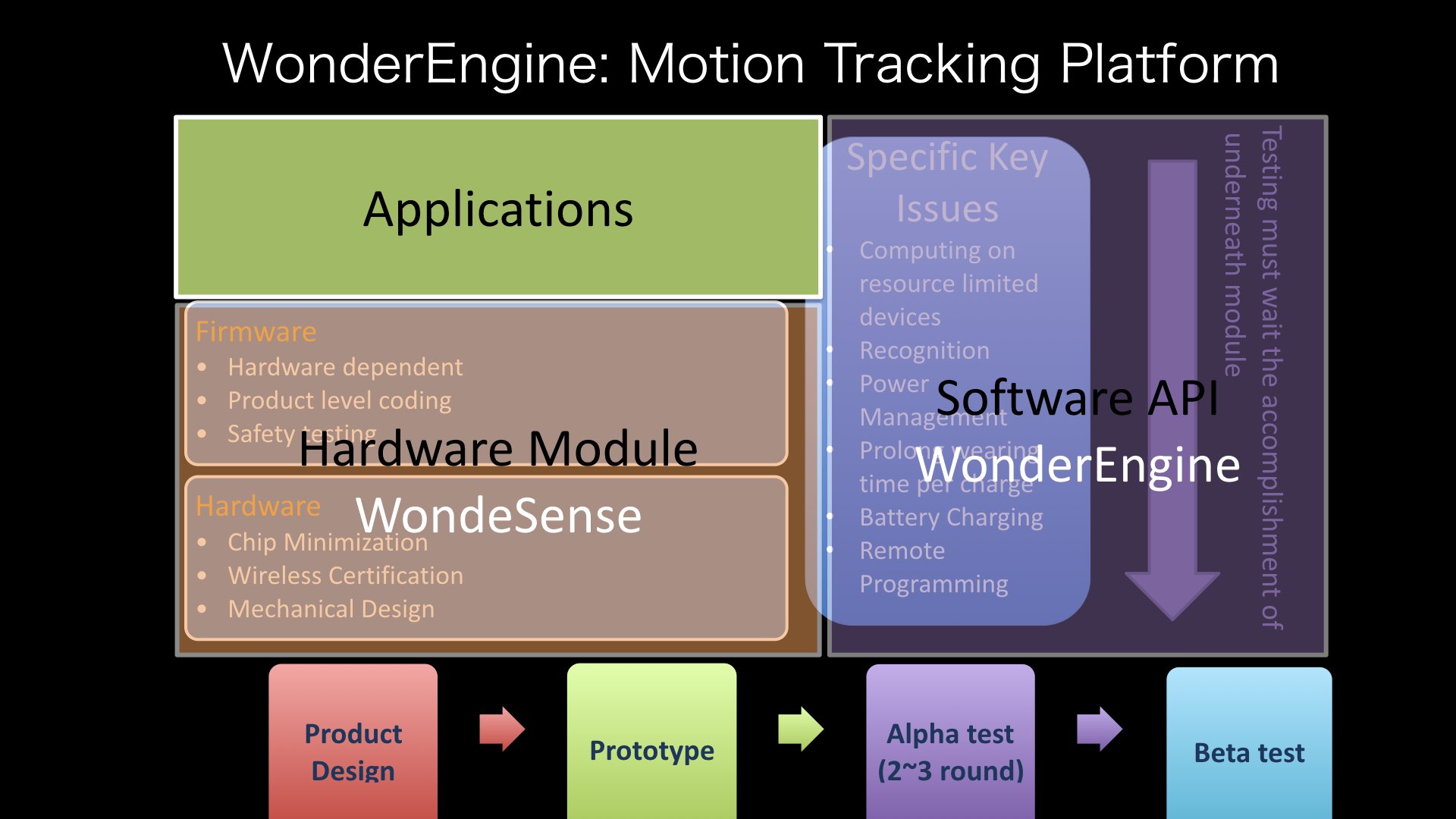
Research topics: sensor node design, synchronization of body area network, filter design, data management, system integration
WonderGlove: a Full-DoF Tracking Glove
Overview: Human hands are sophisticated, and indispensible for diverse operations. The digital glove can provide an intuitive and efficient human computer interaction method, which will take revolutionary change to the field like game, robot interaction, telesurgurey, healthcare, etc. Meanwhile, it is still a challenging task for full-DoF hand motion tracking. Two hands contains 50 DoFs. And our previous research shows that only with a single kind of sensor can not get accurate and robust measurement result. That motivates us to develop a new real-time sensor data fusion method, which will be applied to solve the multi-model sensor fusion problem for the digital glove.
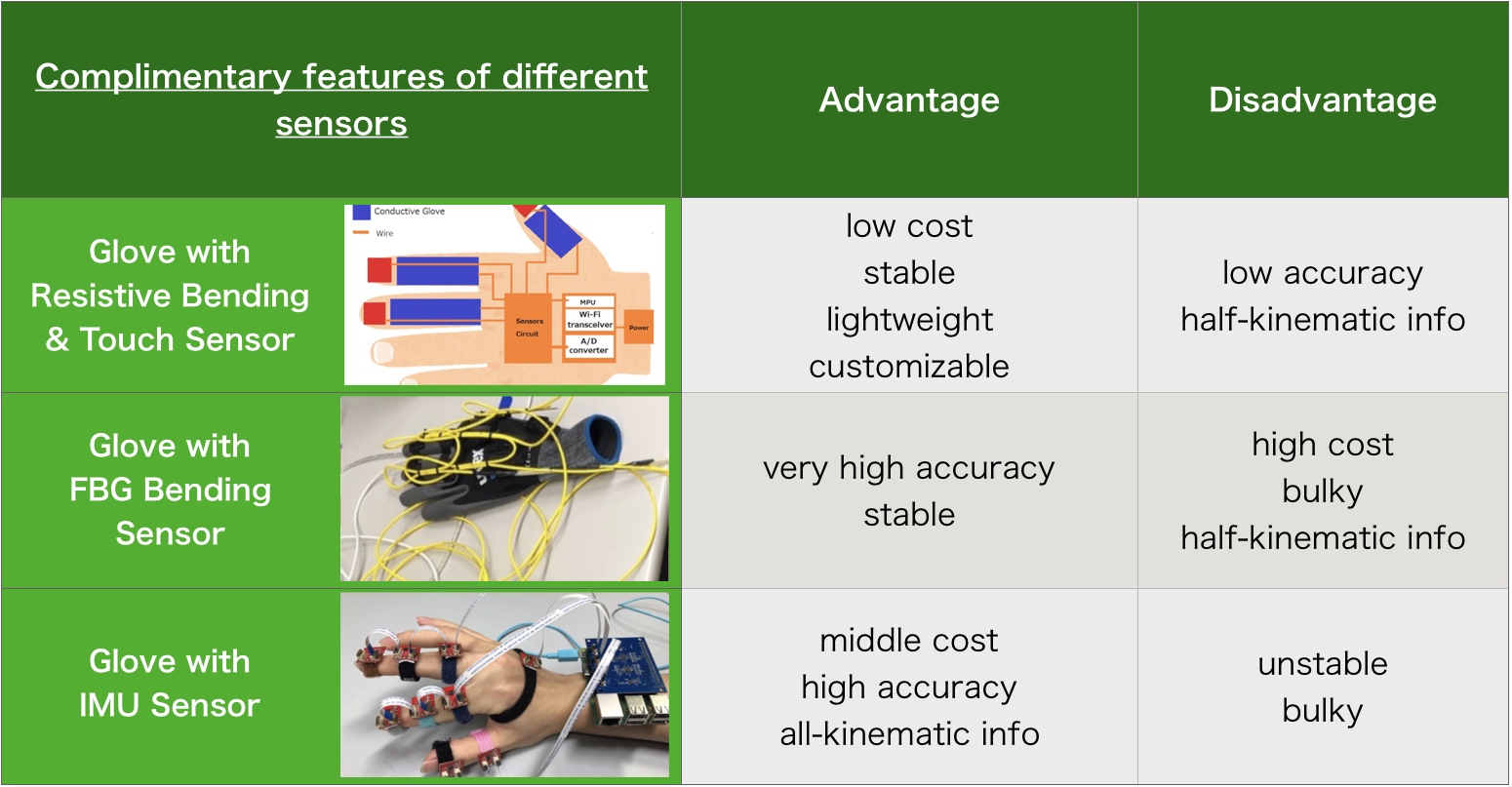
Research topics: Digital Glove, VR, AR, IMU, FBG, conductive sensor, data fusion, hapic simulation, sensor modeling, hand modeling, HD method, regression, energy harvesting
Wearable Handwriting Tracking and Recognition
Overview: For the past long time, when people need to record some information, the cursive handwriting is the only choice. Recently, people have the better choice like stylus&touchpanel or smart pen, which can record and digitalize the cursive handwriting at the same time. The digital information are excellent for long-term storage and convinient to share between different terminals. However, the existed digital handwriting tools like stylus or pen are not self-contained, which greatly limited their applications. Therefore, we are motivated to try some new handwriting recognition systems that integrated with the traditional daily items like finger cap, glove or pen. Our proposed systems are self-contained and keep the original form factor. Our target is that while people are writing in their habited way, both cursive and digital information can be automatively storaged into the computer network.
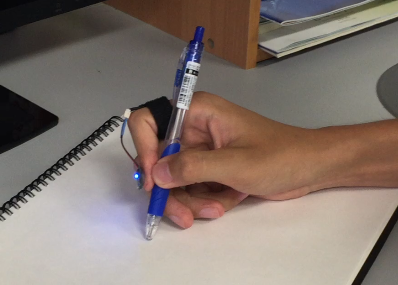
Research topics: neil sensor, glove, pen, cursive handwriting, data fusion, IMU, pressure sensor, RSSI, AoA, LDV, trajectory tracking, recognition, SVM, LSTM
Abnormal Activity Recognition for Living-along Elders
Overview: There are many many elders living-along in Japan. And it is difficult for people to self-discovery their abnormal status. Our target is to use the wearable sensing and data analysing method to find out the abnormal activities in the very early stage.
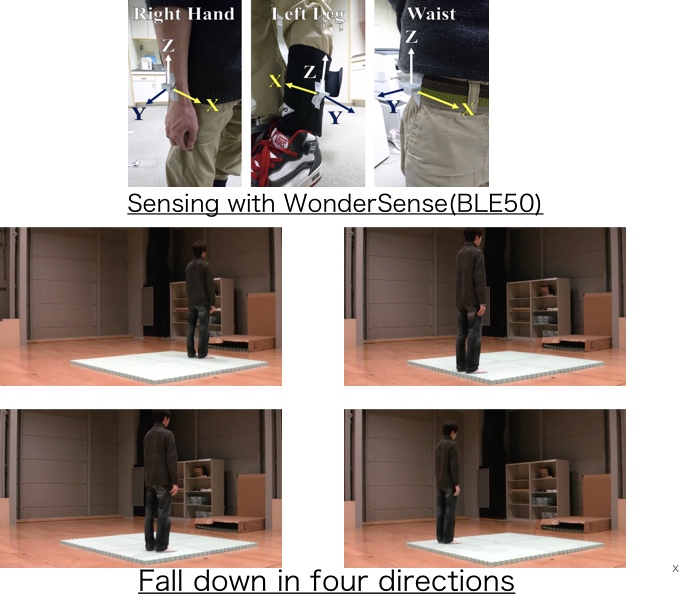
Research topics: Human Activity Recognition(HAR), elders, healthcare, abnormal detection, falldetection, life log, wristband, clustering, DTW, KNN, kernel method, labeling,
AR Whiteboard
Overview: We want to know if the AR method can improve the learning or working efficiency to the team work. AR can become a kind of tele-present technology. It is superior than the traditional tele-education or tele-conference systems in that it enable the participants to interact not only with voice and visual, but also actions and haptics, like they are working in the same space. This research is a quatitative study on the efficiency of the AR tele-present method comparing with the traditional methods.

Research topics: AR whiteboard, 3D modeling, AR network, usability study, AR air writing,
Toothbrushing Measurement
Overview: It can be found in many research results that dental health is connected with heart health. And a good toothbrushing habit is important for long-term dental health. This research is to create a toothbrush which keep the original form factor and can detect and feedback the importent toothbrushing parameters to the user. So far, our toothbrush can detect the brushing regions, strengh, and times with WonderSense (BLE100). Moreover, user can get the real-time feedback with PC or smartphone.
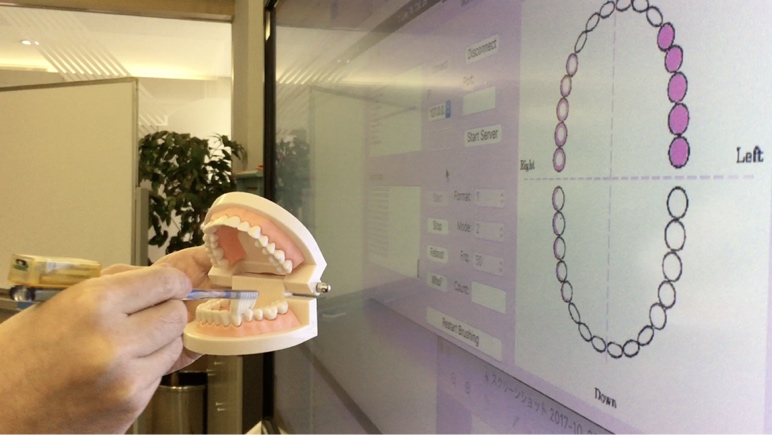
Research topics: Dental health, toothbrushing region detection, toothbrushing pressure detection, indirect force detection, autocorrelation regression, IMU, EKF
WondeRing: A Device for Figner-Gesture Input
Overview: We want to know how to deploy the computing system with extremely constrained resource. If we can deploy a self-contained computing system onto a ring, then we can deploy the system into most of daily objects like glass, earing, cloth, and so on. Thus the ring is a good example for the case study. That is the motivation for this research. So far, we succefully deploy a full-function computing system, including processor, sensors, wireless transiver, wireless charging receiver, and battery, into a champion ring. The WondeRing have multiple functions like control appliance, smartphone, life logger, and so on. Next, we plan to work on two issues. One is form factor, another is the stability for gesture recognition in the noisy dailylife environment.
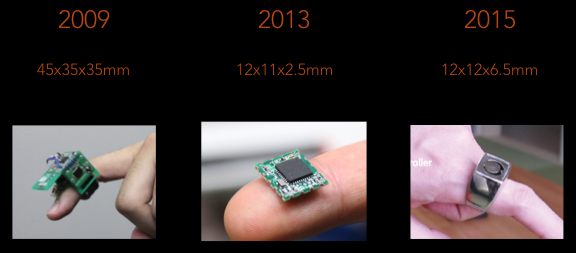
Research topics: Wearables, finger-worn device, home appliance control, universal controller, life logger, WonderBox, gesture recognition, IMU, touch sensor, infrared sensor, wireless charging